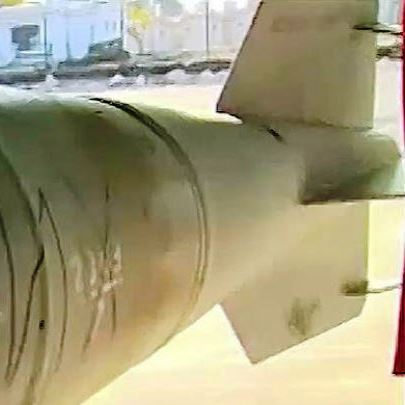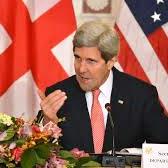(PONARS Eurasia Policy Memo) As Russia begins to wind down its military operation in Syria, it is time to assess what it has taught us about how the Russian military operates. Although relatively small in scale, the operation in Syria has highlighted some major improvements in Russian military capabilities. Compared to the 2008 Georgia War, which was the last time the Russian Air Force operated in a combat environment, the Russian military appears to have made great strides in operational tempo and inter-service integration. The operation has also showcased Russia’s recently developed standoff strike capability and demonstrated significant advances in its ability to carry out expeditionary operations.
Russia’s initial air campaign in Syria successfully targeted weapons and equipment depots that opposition forces had captured from government forces. After eliminating these targets, Russian air forces began coordinating with Syrian and Iranian ground forces against opposition fighters in the northwestern part of the country, though this part of the operation took time to have an appreciable impact.
High Operational Intensity and Improved Inter-Service Coordination
The operational tempo of Russian air operations in Syria was quite high from the start. In October, an average of 45 sorties per day were carried out by a total of 34 airplanes and 16 helicopters. The pace of the operation also increased over time, rising from approximately 20 sorties per day at the start of the operation to around 60 per day at its initial peak on October 8-9. It then declined, most likely because the easiest and most obvious targets had all been hit and opposition forces adapted to Russian air attacks by ceasing to operate out in the open.
The Russian operation further expanded in November 2015, in the aftermath of the bombing of a Russian civilian airliner in the Sinai and again after Turkey shot down a Russian Su-24 that infringed on Turkish airspace. In mid-November, the Russian government announced the addition of 37 Su-34 and Su-27 aircraft, which allowed it to increase the number of daily sorties to 127.
The overall average between the start of the operation on September 30 and the end of December was 60 sorties per day, with a maximum of 189 strikes on December 24. This high operational tempo is especially surprising considering the rash of crashes that Russian military aircraft suffered earlier in 2015. Experts blamed the crashes on Russia’s over-used and aging aircraft fleet. While unconfirmed rumors circulated that the operational tempo and harsh desert conditions resulted in maintenance problems for many Russian aircraft, the Russian Air Force’s ability to maintain the high frequency of sorties for over three months speaks to a more resilient force than expected.
The operation in Syria has also highlighted advances in integration among the branches of Russia’s military. This was one of the goals of military reform undertaken after notable failures were revealed during the war in Georgia. In order to improve inter-service coordination, the Russian military reorganized its regional command structure so that all non-strategic military units in each military district were placed under the direct authority of that district’s military commander. In the past, cooperation across services in a particular region had to be coordinated through the service headquarters in Moscow; the new structure allowed this coordination to take place at the regional level. This innovation has had the effect of greatly improving the speed of decisionmaking in regional conflicts.
In November 2014, the Russian Ministry of Defense also established the National Defense Control Center (NDCC), which acts as a major communications hub and advanced data analysis center for the military. The activation of the NDCC has led to more rapid information transfer between the theater of operations and military leaders in Moscow. Information from all types of military assets around the world is collected and analyzed in one location. As a result, the NDCC has reduced the number of steps in military decisionmaking, resulting in increased speed and higher reliability in adjusting military actions to changes in the operating environment.
In addition, Russia’s air force has demonstrated an ability to work with both other services and foreign forces. The Russian Navy, for example, provided sealift for the Syria campaign, as well as long-range air defense with the S-300 system, which was situated on the Black Sea Fleet’s flagship Slava-class cruiser Moskva in the first half of the operation. Having a ship-based, long-range air defense system allowed Russia to provide defense against potential attacks while avoiding tensions with Israel, which would be unhappy if Russia provided such systems to Syrian forces.[1] Although Russian ground forces played a relatively limited role in the conflict, they were important for providing area defense for the Russian air base at Hmeymim.
More significantly, the Russian air force showed an ability to coordinate its operations with Syrian and Iranian ground forces, which conducted offensives against Syrian opposition positions under Russian air cover. While these offensives were not as effective at regaining territory as Russian leaders might have hoped at the start of the operation, they did eventually succeed in driving anti-government forces out of several key areas and placed the Assad government in a stronger position for potential peace negotiations.
Advances in Weaponry
Russia’s operation in Syria tested and highlighted advances in Russian weaponry while revealing the limitations of its new capabilities. For the first time, Russian aircraft used precision-guided munitions (PGMs) in combat. Only about 20 percent of strikes used such modern weaponry, however, while the rest were carried out with older, unguided gravity bombs. According to Russian analysts, the air force achieved better accuracy with its unguided munitions by using modern onboard targeting equipment and by more intensive training of its pilots. As a result, Russian aircraft were able to hit multiple targets in a single sortie for the first time. The vulnerability of Russian aircraft to enemy attack was reduced by decreasing the amount of time spent in areas vulnerable to anti-aircraft fire from the ground and by the widespread incorporation of technology that allows Russian strike aircraft to fly at night. Finally, the Russian Air Force also used for the first time unmanned aerial vehicles (UAVs) to provide targeting information to strike aircraft and to collect data on the effectiveness of bombing sorties in hitting targets.
At the same time, the Russian military sought to limit the amount of new weapons expended. These munitions are relatively expensive when compared to unguided bombs. Moreover, the air force has limited quantities of PGMs in its arsenal and did not wish to expend them on targets when the use of such weapons is unnecessary.
The land-attack cruise missile (LACM) strikes against Syrian targets, launched in October 2015 from relatively small missile ships in the Caspian Sea, were primarily intended to serve as a demonstration of Russia’s capabilities. The attacks were launched from three Buyan M-class corvettes and a Gepard-class frigate and flew over Iranian and Iraqi territory on their way to their targets. They were not necessary for the success of the operation, which could have been carried out perfectly well by Russian aircraft already in Syria. By launching missiles from the Caspian, Russia demonstrated that it could launch strikes from ships well inside Russia’s air defense perimeter. The real goal was to show NATO military planners (and neighboring states) that Russia has a new standoff land-attack missile capability that can be difficult to neutralize.
Russia’s demonstration of new naval strike capabilities continued in December 2015 when Kalibr LACMs were launched against targets from a recently constructed diesel submarine operating in the Mediterranean Sea. This launch of LACMs from hard-to-track submarines further highlighted the potential threat posed by Russian naval vessels against Russia’s potential opponents. These strikes were closely coordinated with the air force, which sent out a sizeable percentage of its long-range aviation to conduct strikes against the Islamic State. This force included five Tu-160, six Tu-95MS, and 14 Tu-22M3 long-range bombers, which launched Kh-555 and Kh-101 cruise missiles and also dropped gravity bombs on targets in Raqqa. These cruise missiles, with a range of approximately 2000 kilometers, had never been used in combat. While a number of analysts dismissed the tactics used by the long-range aviation as outdated, the goal of the operation was to highlight the combat readiness of the aircraft rather than the kinds of tactics the service would actually use in combat against an adversary that can defend against strikes by strategic aviation.
Unexpected Ability to Deploy and Sustain Operations out of Area
Until last September, most analysts (including myself) argued that Russia was not capable of conducting a military operation away from its immediate neighborhood, as its military lacked the ability to transport significant numbers of personnel or equipment to remote theaters of operations. However, the Russian military was able to transport the necessary equipment and personnel by pressing into service the vast majority of its large transport aircraft and almost all naval transport ships located in the European theater. Furthermore, it reflagged several Turkish commercial cargo vessels as Russian navy ships and pressed them into service to transport equipment to Syria. While Russia remains almost completely dependent on its rail network for military transport, the operation in Syria has shown that it has sufficient sea- and airlift capability to carry out a small operation away from its borders and that it can increase that capacity in innovative ways.
Russia’s initial planning for its Syrian operation assumed that it would continue for three to six months. The slow initial progress by Syrian government forces in retaking territory combined with the perception of an increased threat to Russian interests from both ISIS and Turkey, resulted in an expansion of operations. Russia began to use at least two additional Syrian airbases more conveniently located for providing air support for Syrian government offensives in the southern and eastern parts of the country. Each base used by Russian aircraft requires protection, which led to the deployment of additional artillery batteries. Despite an increase in forces, the Russian military has not had problems resupplying its troops and was ready to continue operations in Syria for the indefinite future.
The recent announcement that Russia would begin to withdraw its forces from Syria does not necessarily mean that the operation is ending. In the same announcement, President Vladimir Putin ordered Defense Minister Sergey Shoigu to keep all existing bases in Syria open and operating at present levels. Russian air defense systems and some aircraft are likely to remain in Syria. This will allow for a quick return of Russian forces to Syria if the political and military situation warrants it.
Conclusion
Russia’s operation in Syria sought to accomplish multiple goals. Apart from its geopolitical objectives, it was designed to test improvements in Russian military capabilities resulting from military reforms carried out over the last seven years and to highlight these improvements to potential adversaries. Although the Russian operation was initially slow in helping the Syrian government turn the tide against its opponents—and the impact of recent offensives and the subsequent ceasefire remains to be seen—it is clear that these reforms have resulted in a significant increase in Russia’s warfighting capability.
Dmitry Gorenburg is a Senior Research Scientist at CNA and Associate at Harvard University’s Davis Center for Russian and Eurasian Studies.
[PDF]
[1] The confrontation with Turkey in the aftermath of the downing of a Russian Su-24 on November 24, 2015, changed the calculus, with Russia deploying an S-400 long-range air defense system to Hmeymim air base in the aftermath of the attack.










